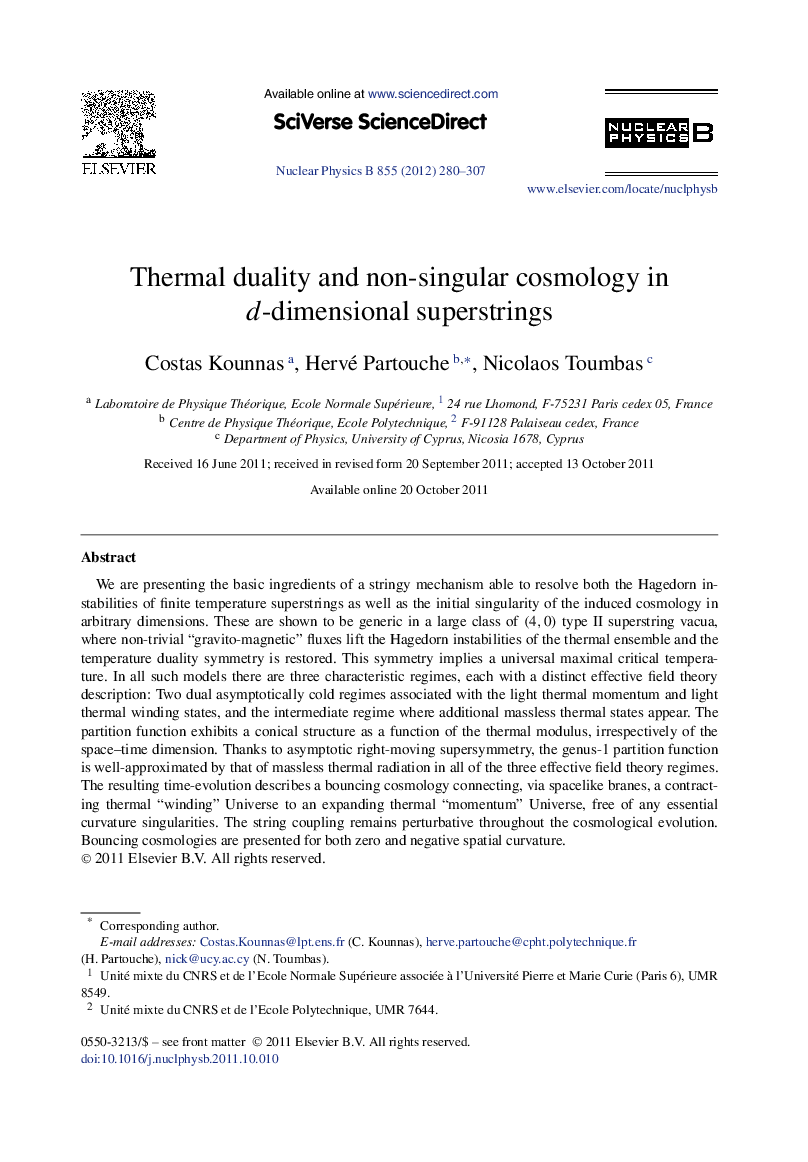| کد مقاله | کد نشریه | سال انتشار | مقاله انگلیسی | نسخه تمام متن |
|---|---|---|---|---|
| 1843620 | 1031569 | 2012 | 28 صفحه PDF | دانلود رایگان |

We are presenting the basic ingredients of a stringy mechanism able to resolve both the Hagedorn instabilities of finite temperature superstrings as well as the initial singularity of the induced cosmology in arbitrary dimensions. These are shown to be generic in a large class of (4,0)(4,0) type II superstring vacua, where non-trivial “gravito-magnetic” fluxes lift the Hagedorn instabilities of the thermal ensemble and the temperature duality symmetry is restored. This symmetry implies a universal maximal critical temperature. In all such models there are three characteristic regimes, each with a distinct effective field theory description: Two dual asymptotically cold regimes associated with the light thermal momentum and light thermal winding states, and the intermediate regime where additional massless thermal states appear. The partition function exhibits a conical structure as a function of the thermal modulus, irrespectively of the space–time dimension. Thanks to asymptotic right-moving supersymmetry, the genus-1 partition function is well-approximated by that of massless thermal radiation in all of the three effective field theory regimes. The resulting time-evolution describes a bouncing cosmology connecting, via spacelike branes, a contracting thermal “winding” Universe to an expanding thermal “momentum” Universe, free of any essential curvature singularities. The string coupling remains perturbative throughout the cosmological evolution. Bouncing cosmologies are presented for both zero and negative spatial curvature.
Journal: Nuclear Physics B - Volume 855, Issue 2, 11 February 2012, Pages 280–307